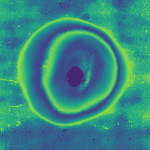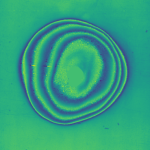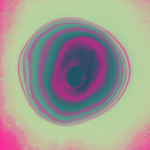Eckdaten
- Zeit: 10/2020 – heute
- An der TU Darmstadt, TEMF, Prof. Boine-Frankenheim
- Teil der Forschung zur Dissertation
- Fokus:
- Code Entwicklung (mit python)
- Bildverarbeitung für RCFs
- Kalibrierungen für Datensets
Ergebnisse
Dieses Projekt resultierte bisher in zwei Publikationen:
- Eine Version 1.0 für den pyRES Code
- Ein peer-reviewed Artikel
BESCHREIBUNG
Während viele Simulationen das Problem nur vereinfacht betrachten ist die Datenlage dünn und, wie in einer betreuten Arbeit und dem zugehörigen Artikel gezeigt, nicht 100%ig vergleichbar.
Mit Hilfe von modernen Bildverarbeitungsmethoden, wie dem Sobol Filter und der Canny Edge Detection, konnte diese Ungenaugikeit reduziert werden.
META
- Time: 10/2020 – today
- At TU Darmstadt, TEMF, Prof. Boine-Frankenheim
- Part of research for PhD Thesis
- Focus:
- Code development (using python)
- Automatic image processing
- New calibration of data
DEliverables
The project resultet in two deliverables so far:
- pyRES V1.0
- One peer-reviewed article
Description
Modeling laser-driven ion beams is a complex topic.
While many simulations consider the problem only in a simplified way, the data is sparse and, as shown in a supervised paper and the associated article, not 100% comparable.
The variation in the data results from boundary conditions in the analysis that are not precisely defined.
Modern image processing methods, such as the Sobol Filter and Canny Edge Detection, were used to reduce this inaccuracy.
The testing of these methods then resulted in the implementation of pyRES.
py RES is an acronym for pythonic RCF Evaluation Software and allows precisely that. The code is written in object-oriented python 3 and is executed using the Jupyter packages.
The code includes basic image processing methods and evaluation routines that can determine the ion beam’s energy spectrum and divergence.
The code is only available in the first version, which still requires many externally generated auxiliary files.
The further development of the tool and the integration of additional functions is a goal for the near future to set a consistent basis and a new standard in the evaluation of RCF stacks.
Links und Referenzen / Links and References
- B. Endl
Automatisierte Bildverarbeitung für Ionenstrahldiagnostik
B.Sc. Thesis (2021) - B. Schmitz, M. Metternich, O. Boine-Frankenheim
Automated reconstruction of the initial distribution of laser accelerated ion beams from radiochromic film (RCF) stacks
Rev. Sci. Inst. 93, 093306 (2022) - B. Schmitz, B. Endl
gitlab: pythonbased RCF Evaluation Software (2022)





